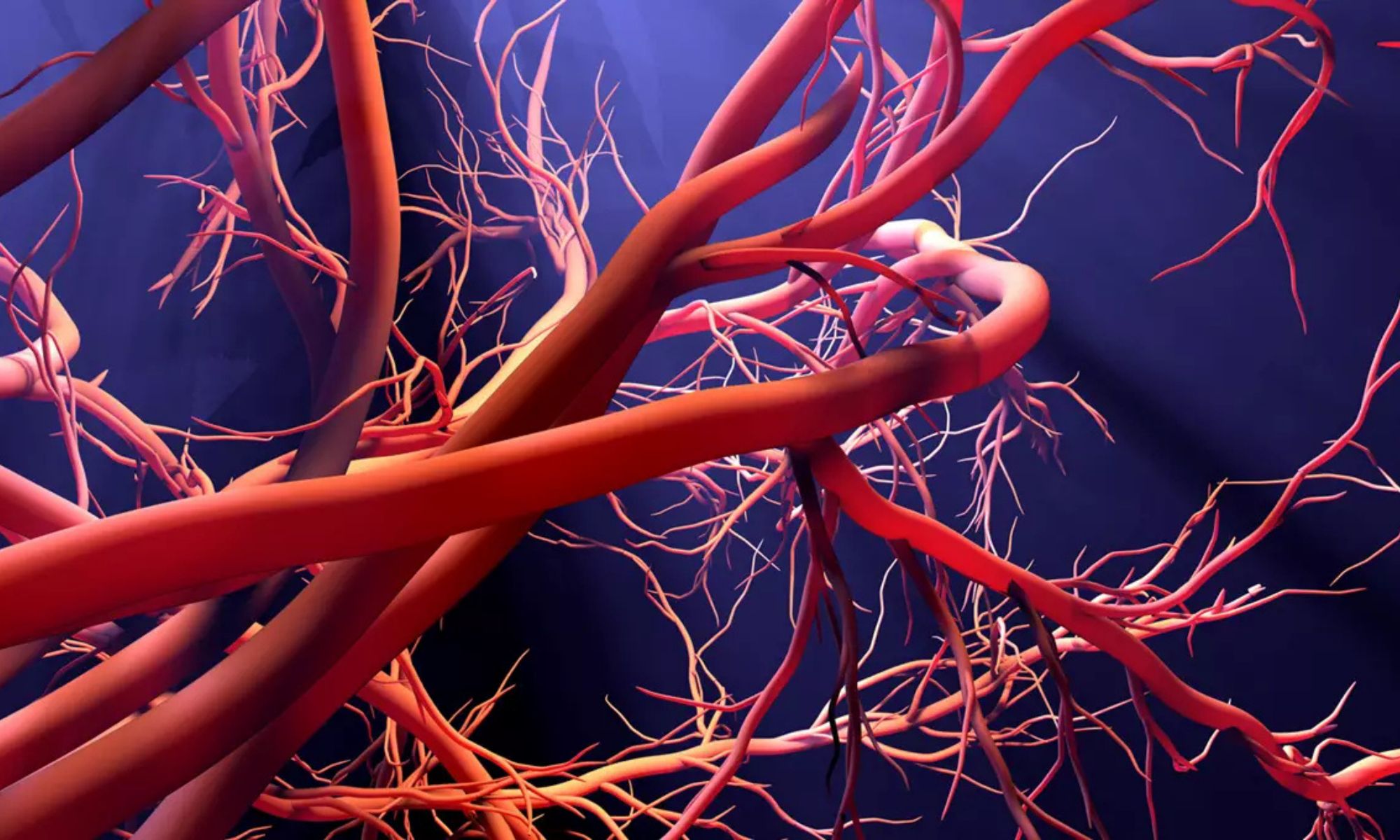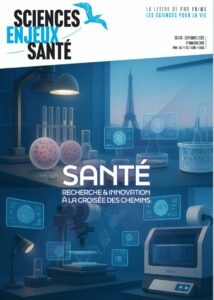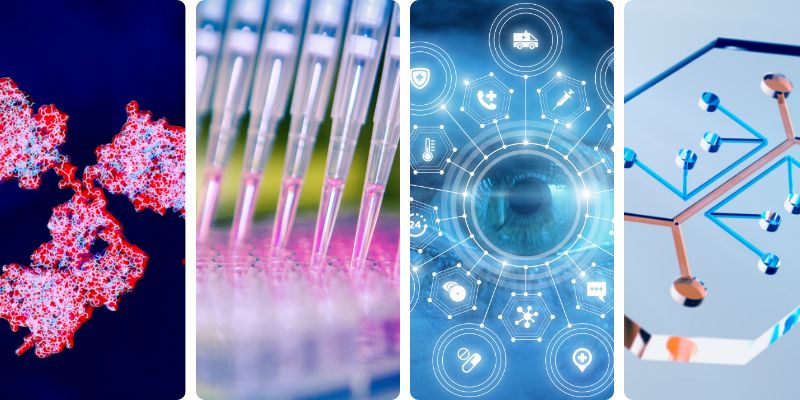
Organoid biobanks, Shaping Standards for the MPS, Two global partnerships : InSphero x Tessara Therapeutics & Merck x imec, Stanford breakthrough in vascularized organoids and more
News on non-animal methods
JUNE 09 - 13, 2025NEWS, REPORTS & POSITION STATEMENTS
1. Organoid biobanks : a breakthrough — but for whom ?
Organoids are reshaping biomedical research and drug development by offering more physiologically relevant models. But one critical issue is often overlooked : the lack of population diversity in organoid biobanks. Studies show that most organoids currently used in research are derived from donors of predominantly European ancestry. Populations from the Middle East, Africa, Latin America, and South Asia are significantly underrepresented or entirely absent.
In a Linkedin post, CNRS researcher Nicolas Aznar calls for joining forces to build a collective initiative aimed at improving population representation in organoid biobanks.
Read the full post on Linkedin
INTERVIEWS, NOMINATIONS & AWARDS
2. On Point : Is animal testing even needed anymore ?
In the recent episode of the WBUR show On Point, Meghna Chakrabarti spoke with Wyss Founding Director Donald Ingber, about the implications of the FDA Modernization Act 2.0, the FDA’s recent announcement that they plan to phase out animal testing, and what’s required to make that a reality.
The interview also featured : Birgit Girshick, Chief Operating Officer of Charles River Laboratories ; Nicole Kleinstreuer, Acting Deputy Director for Program Coordination, Planning and Strategic Initiatives at the National Institutes of Health ; and Dr. Jenny Tam, Director of Synthetic Biology at the Wyss Institute for Biologically Inspired Engineering at Harvard University.
Listen to the full interview on WBUR
TOOLS, PLATFORMS, CALLS
3. Help Shape Standards for the MPS & OoC Engineering Community
NEN, the Royal Netherlands Standardization Institute is reaching out to gather your input on standards that are currently in use —and where you see gaps — in the Microphysiological Systems (MPS) and Organ-on-Chip (OoC) field, specifically focused on engineering and manufacturing aspects. Your insights will directly inform efforts to harmonize practices and develop standards that better support research, development, and commercialization
Complete the survey before the 20th of June.
Read more and complete the survey
4. Framework for classifying chemicals for repeat dose toxicity using NAMs
As part of the EPAA European Partnership for Alternative Approaches designathon launched in 2023, ECETOC : European Centre for Ecotoxicology and Toxicology of Chemicals, a collective works developed a NAMs based classification system for “human systemic toxicity” mainly focussed on repeat dose toxicity.
Similar to the assessment carried out in classification for ‘Specific Target Organ Toxicity — Repeated Exposure’ (STOT-RE) based on ECETOC’s Tiered Approach integrating three lines of evidence, the works demonstrate the ability of the developed framework, which integrates in silico predictions, in vitro bioavailability and PBK modelling and in vitro bioactivity assays, to categorise chemicals into three different levels of concern by considering potency and severity.The work also highlights important challenges that need to be addressed, especially about the range of assays to be employed to increase the confidence in the classification.
5. Human Advanced In Vitro Model Initiative by PCRM x InSphero
The Physicians Committee for Responsible Medicine (PCRM), a nonprofit that advances human-based science, and InSphero, a global leader in 3D in vitro technology for drug safety and efficacy testing, are pleased to offer the 2025 Human Advanced In Vitro Model Initiative (HUMAIN) Award. The HUMAIN Award recognizes researchers working to expand access to and accelerate the uptake of human-specific nonanimal approaches.
Five winning laboratories will receive :
- $20,000 toward InSphero technology or services
- Access to an inaugural one-day training course in Schlieren, Switzerland, with up to $1,000 in travel grants to attend
- Two hours of monthly consulting with InSphero experts
- Up to $2,000 in travel grants to present findings at scientific conferences
- $2,500 towards open access publication fees
Eligible applicants must be from nonprofit, educational, or research institutions using human-specific approaches. The deadline to apply is July 14, 2025.
INDUSTRY, BIOTECH & PARTNERSHIPS
6. New global partnership between InSphero and Tessara Therapeutics
InSphero, a global leader in scalable and reliable 3D in vitro cell culture solutions for drug discovery, has entered into a distribution agreement with Tessara Therapeutics, an Australian biotech company known for its advanced neuronal microtissue technology.
This agreement marks an important milestone in expanding access to Tessara’s human-relevant 3D brain microtissue technology. Through this collaboration, InSphero will integrate Tessara’s advanced RealBrain® 3D brain microtissue models, including ArtiBrain™ and ADBrain™, into their service portfolio. This enables a unified preclinical workflow that combines efficacy, neurotoxicity, and liver safety testing in one scalable, human-relevant solution.
7. Merck and imec collaborate to develop a disruptive MicroPhysiological Systems platform
imec, a world-leading research and innovation hub in nanoelectronics and digital technologies, and Merck, a leading science and technology company, announce a strategic partnership to develop an advanced MicroPhysiological Systems (MPS) platform.
Their collaboration aims to drive both partners’ efforts to improve efficiency of drug discovery and development by increasing the predictive validity of next-generation preclinical models and progressively reducing reliance on animal testing. This approach aims to provide scientists with the ability to elucidate time-relevant insights from individual organ health to a multi-organ connected system, paving the way for more accurate and efficient drug development processes.
Read the press release by imec
8. Biomed NXTGEN Hightech projects passed the Stage Gate
hDMT has an important role in the Biomed domain of the NXTGEN Hightech National Growth Fund initiative, as leader of the Biomed 01 One-Stop-Shop project as well as the qualification & regulation activities within this domain. The Biomed domain further consists of the content-related projects, Lab-on-Chip, Organ-on-Chip, Artificial Organs and Cell Production Technologies.
Per May 1st, the program leaders have been informed about the results, and they are very proud that all Biomed projects can continue for at least another 2 years, as the second Stage Gate is scheduled for February 2027. A great confirmation of the relevance and quality of execution of the five Biomed projects.
Read more about the Biomed projects
SCIENTIFIC DISCOVERIES & PROTOCOLS
9. Stanford breakthrough : Gastruloids enable modeling of the earliest stages of human cardiac and hepatic vascularization
Published June 5 in Science, Oscar Abilez, senior scientist in the Division of Pediatric Cardiac Surgery ‑co-lead author of the study‑, and a team of Stanford Medicine researchers developed a way to create the first heart and liver organoids that generate their own blood vessels, possibly paving the way for organoid-based regenerative therapies.
This solved a key conundrum in keeping organoids alive. Until now, organoids could only grow a few millimeters before their centers died from lack of oxygen and nutrients. The integrated blood vessels could allow the organoids to not only grow larger, but also to reach a more mature state, making them more useful as biological models.
Learn more from the Stanford Medicine News Center
Read the publication in Science
10. New In Vitro Cancer Model Uncovers How Tumor Cells Enter the Bloodstream
In a significant leap forward in cancer biology, researchers from the Institute of Industrial Science at The University of Tokyo, in collaboration with Kanazawa University, Institute of Science Tokyo, and Kyorin University School of Medicine, have uncovered a detailed mechanism illustrating how clusters of tumor cells breach blood vessel walls to enter the bloodstream.
This groundbreaking study, recently published in the journal iScience, holds significant implications for therapeutic development. Preventing or mitigating the intravasation of CTC clusters could curb metastatic spread and improve patient survival rates. The novel 3D in vitro system offers a versatile platform for screening anti-metastatic compounds aimed specifically at interrupting the signaling pathways or mechanical disruptions facilitating vascular entry.
Read the publication in iScience
UPCOMING WEBINARS, WORKSHOPS, SYMPOSIA
June 16 – 17 : 3rd workshop on the European roadmap to phase out animal testing
On 16 – 17 June 2025, the European Commission and ECHA will jointly organise a third workshop to discuss elements of the roadmap to phase out animal testing for chemical safety assessments. The purpose is to present proposed recommendations of the roadmap for stakeholder consultation.
The registration to join in Helsinki is closed but the organisers encourage you to follow the live-streamed workshop through the ECHA website or its YouTube channel.


